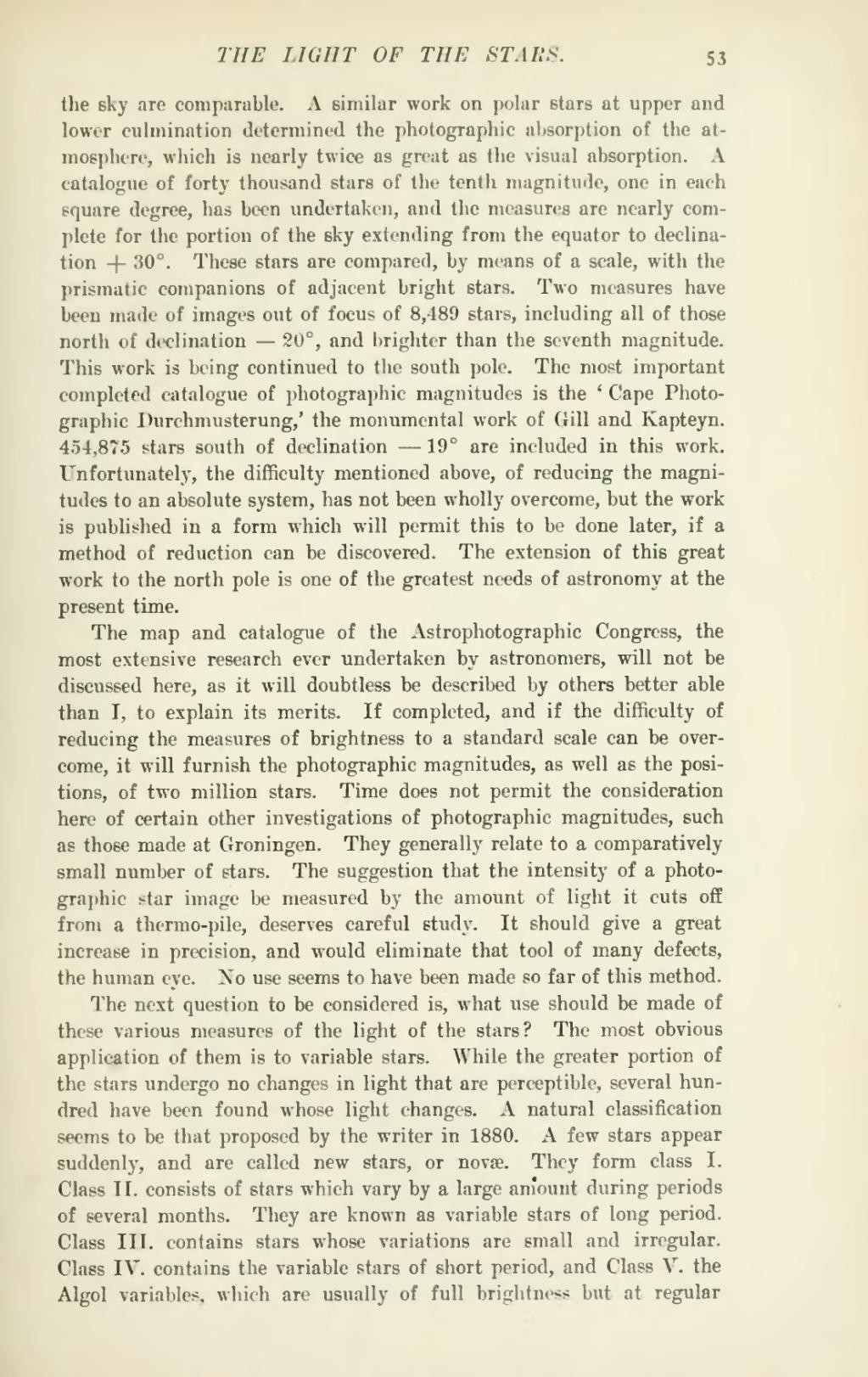the sky are comparable. A similar work on polar stars at upper and lower culmination determined the photographic absorption of the atmosphere, which is nearly twice as great as the visual absorption. A catalogue of forty thousand stars of the tenth magnitude, one in each square degree, has been undertaken, and the measures are nearly complete for the portion of the sky extending from the equator to declination +30°. These stars are compared, by means of a scale, with the prismatic companions of adjacent bright stars. Two measures have been made of images out of focus of 8,489 stars, including all of those north of declination −20°, and brighter than the seventh magnitude. This work is being continued to the south pole. The most important completed catalogue of photographic magnitudes is the 'Cape Photographic Durchmusterung,' the monumental work of Gill and Kapteyn. 454,875 stars south of declination −19° are included in this work. Unfortunately, the difficulty mentioned above, of reducing the magnitudes to an absolute system, has not been wholly overcome, but the work is published in a form which will permit this to be done later, if a method of reduction can be discovered. The extension of this great work to the north pole is one of the greatest needs of astronomy at the present time.
The map and catalogue of the Astrophotographic Congress, the most extensive research ever undertaken by astronomers, will not be discussed here, as it will doubtless be described by others better able than I, to explain its merits. If completed, and if the difficulty of reducing the measures of brightness to a standard scale can be overcome, it will furnish the photographic magnitudes, as well as the positions, of two million stars. Time does not permit the consideration here of certain other investigations of photographic magnitudes, such as those made at Groningen. They generally relate to a comparatively small number of stars. The suggestion that the intensity of a photographic star image be measured by the amount of light it cuts off from a thermo-pile, deserves careful study. It should give a great increase in precision, and would eliminate that tool of many defects, the human eye. No use seems to have been made so far of this method.
The next question to be considered is, what use should be made of these various measures of the light of the stars? The most obvious application of them is to variable stars. While the greater portion of the stars undergo no changes in light that are perceptible, several hundred have been found whose light changes. A natural classification seems to be that proposed by the writer in 1880. A few stars appear suddenly, and are called new stars, or novas. They form class I. Class II. consists of stars which vary by a large amount during periods of several months. They are known as variable stars of long period. Class III. contains stars whose variations are small and irregular. Class IV. contains the variable stars of short period, and Class V. the Algol variables, which are usually of full brightness but at regular

